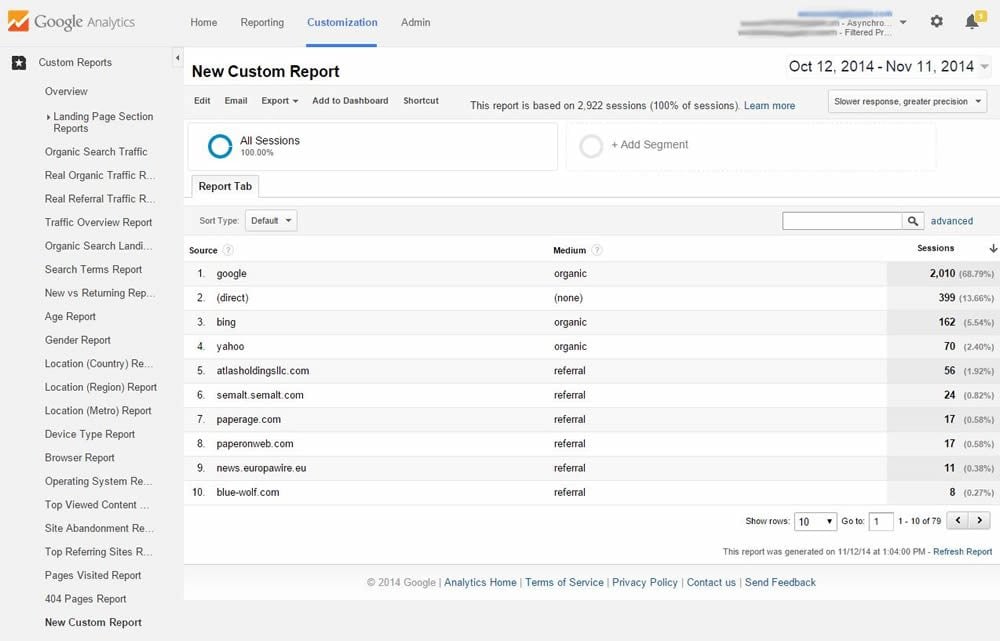Enhance Your Information Evaluation Utilizing Additional Dimension in Google Analytics
Checking out the capabilities of second measurements in Google Analytics opens up a realm of opportunities for refining data analysis. By layering extra measurements onto main information sets, an even more complex narrative emerges, shedding light on individual interactions and performance indications.
Comprehending Additional Dimensions
Second dimensions in Google Analytics refer to extra criteria that can be included to the key dimension, enabling for a much more thorough evaluation of information (Secondary Dimension in Google Analytics). By including secondary dimensions, analysts can sector and filter information to discover patterns, trends, and relationships that could not be noticeable when looking at the information as a whole.

Benefits of Making Use Of Second Measurements
When assessing data in Google Analytics, the usage of second measurements provides vital understandings into individual actions and performance metrics. By adding an additional measurement to your primary data, you can delve much deeper into the attributes of your site visitors and their interactions. Among the key advantages of utilizing second dimensions is the capability to sector and contrast data a lot more efficiently. This division allows you to recognize how different variables, such as demographics or traffic sources, effect customer behavior and conversions (Secondary Dimension in Google Analytics).
Furthermore, additional dimensions boost the context of your key information, offering an extra thorough sight of user involvement and efficiency metrics. Generally, the use of secondary measurements in Google Analytics can dramatically boost the depth and quality of your information evaluation, leading to even more enlightened decision-making and boosted results.
Just How to Include Second Measurements
By integrating additional dimensions in Google Analytics, customers can acquire deeper understandings into their data analysis procedure, permitting even more extensive analysis of individual actions and performance metrics. Including additional measurements is an uncomplicated procedure that can considerably boost the depth of analysis. To add a second dimension in Google Analytics, beginning by navigating to the record you desire to analyze. As soon as in the report, find the "Secondary measurement" tab above the data table. Click it to disclose a dropdown menu with various alternatives such as Habits, Technology, and Personalized Dimensions. Select the measurement you wish to include, such as 'Source/Medium' or 'Device Classification'. This additional dimension will after that be related to your existing information, giving extra context and permitting for a more comprehensive evaluation of user communications. By making use of second dimensions successfully, individuals can discover important understandings that may have otherwise been ignored, bring about notified decision-making and enhanced performance methods.
Studying Data With Second Dimensions
Using second dimensions in information evaluation gives a more comprehensive understanding of user behavior and efficiency metrics. By including an additional explanation dimension to your main information embeded in Google Analytics, you can delve deeper into the features of your website visitors and anchor their interactions. Combining the primary dimension of 'source/medium' with the additional dimension of 'landing page' can disclose which certain web pages are bring in web traffic from different resources, aiding you enhance these pages for better engagement.

Basically, evaluating data with second measurements encourages you to obtain beneficial understandings into customer behavior, determine trends, and make notified decisions to enhance the efficiency of your electronic residential or commercial properties.
Best Practices for Second Dimensions
In data evaluation, including secondary measurements efficiently can considerably improve the depth of insights stemmed from metrics and user behavior patterns. When using second measurements in Google Analytics or any kind of other logical device, it is essential to stick to finest methods to guarantee the precision and significance of the data analysis.
One trick ideal method is to very carefully select second dimensions that enhance the primary dimension being analyzed. Selecting additional dimensions that give extra context or further segmentation can provide a much more extensive understanding of the data. It is also necessary to stay clear of overcomplicating the analysis by consisting of a lot of additional measurements, which may result in complication or dilution of understandings.
Furthermore, it is a good idea to try out various mixes of second and main dimensions to discover brand-new connections and trends. On a regular basis fine-tuning the selection and reviewing of additional measurements based upon the specific goals of the analysis can result in more workable insights. By adhering to these finest techniques, data analysts can utilize additional dimensions effectively to improve the overall information evaluation procedure and decision-making capabilities.

Verdict
Finally, integrating secondary measurements in Google Analytics is vital for a comprehensive information analysis technique. By leveraging additional measurements along with main ones, analysts and marketers helpful resources can uncover valuable understandings and correlations that can notify decision-making and enhance electronic advertising and marketing approaches. Comprehending just how to properly make use of second measurements and complying with finest methods will permit professionals to remove significant data and improve their overall performance metrics.
Additional dimensions in Google Analytics refer to additional criteria that can be included to the key measurement, allowing for an extra in-depth analysis of information. By including second measurements, analysts can segment and filter information to reveal patterns, fads, and relationships that may not be apparent when looking at the data as a whole. Incorporating the key measurement of 'source/medium' with the secondary dimension of 'touchdown page' can reveal which certain pages are bring in traffic from different resources, assisting you optimize these web pages for far better interaction.
One key best technique is to thoroughly pick secondary measurements that complement the main dimension being evaluated. By complying with these best methods, data analysts can take advantage of second dimensions properly to improve the overall information analysis procedure and decision-making abilities.